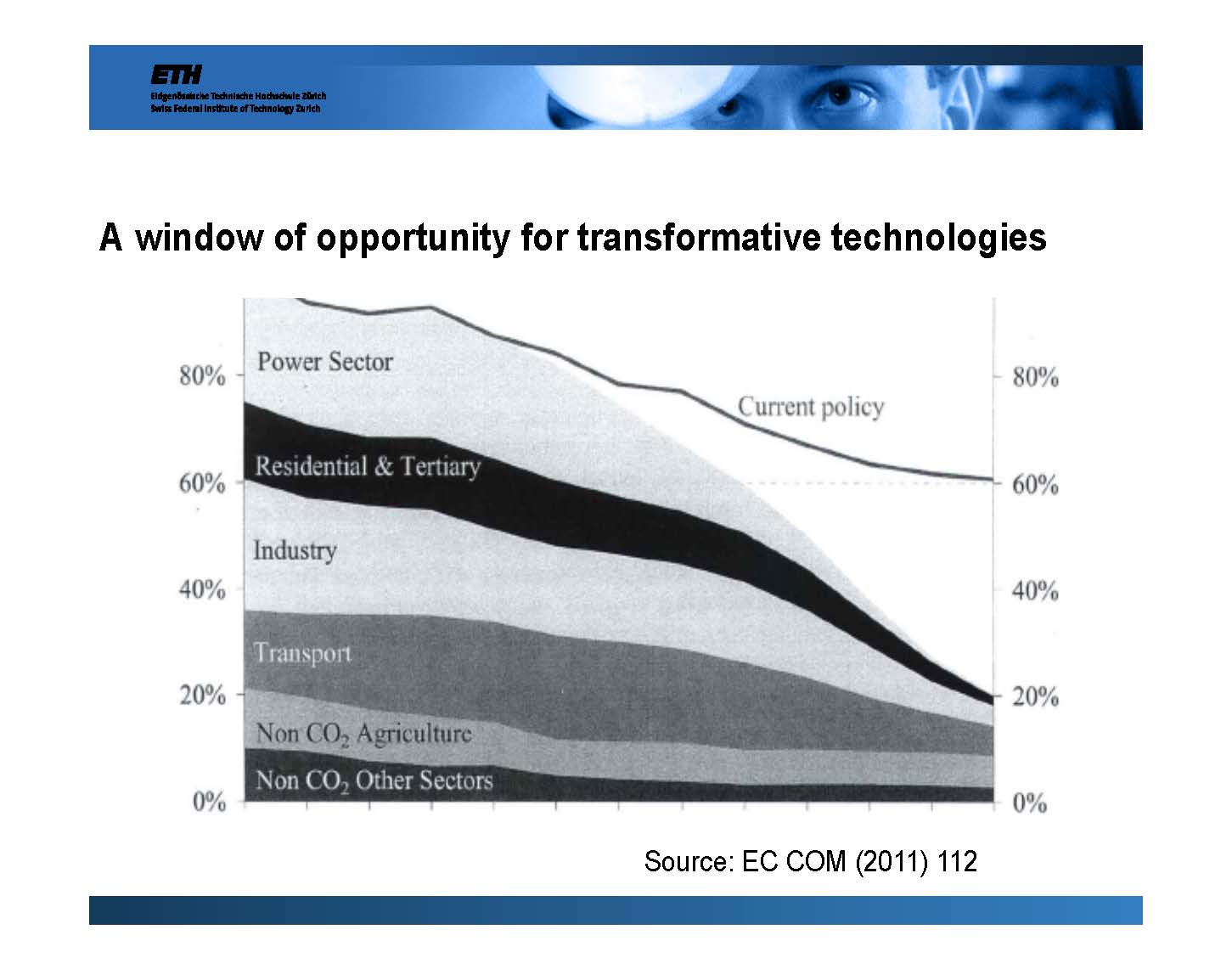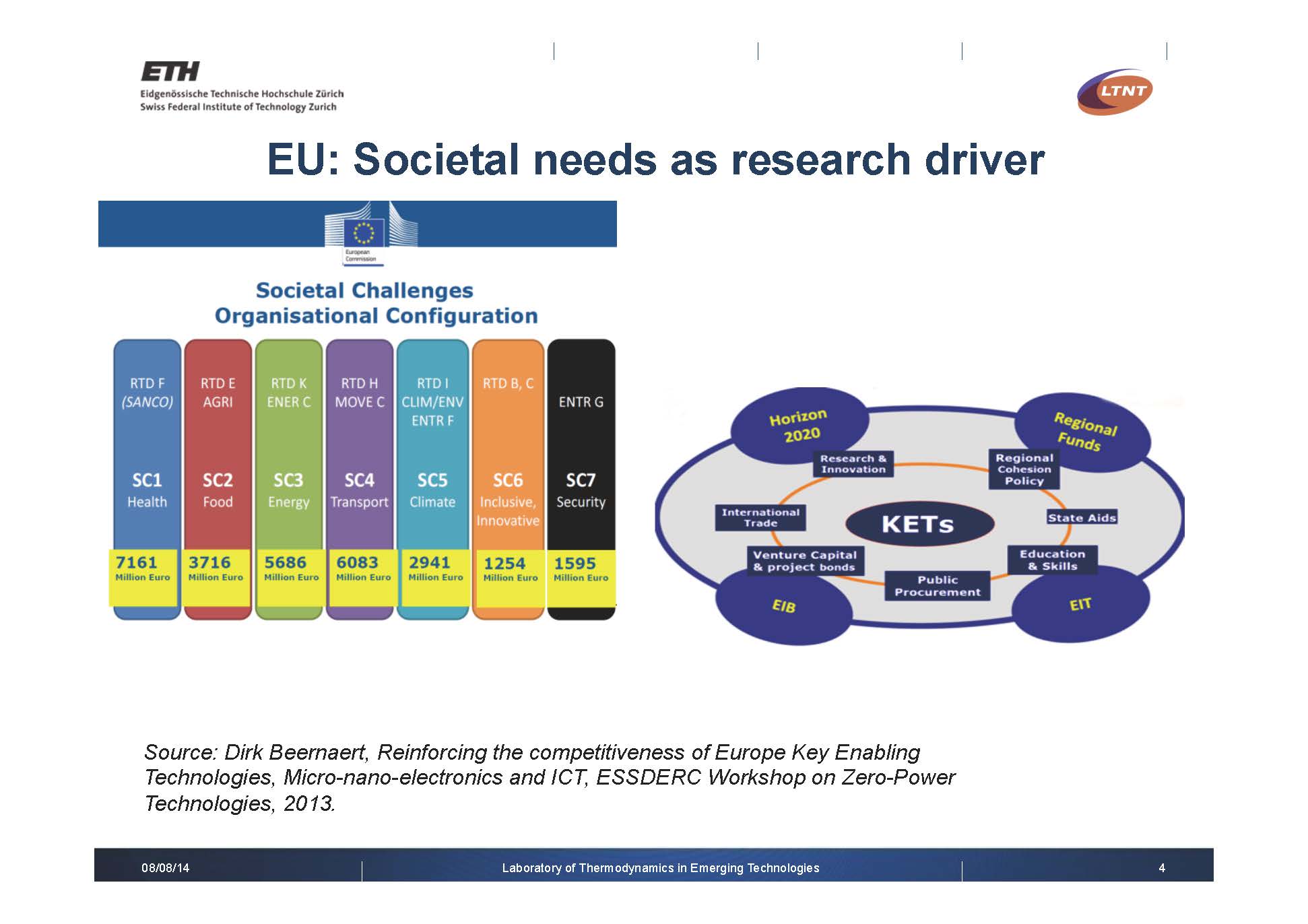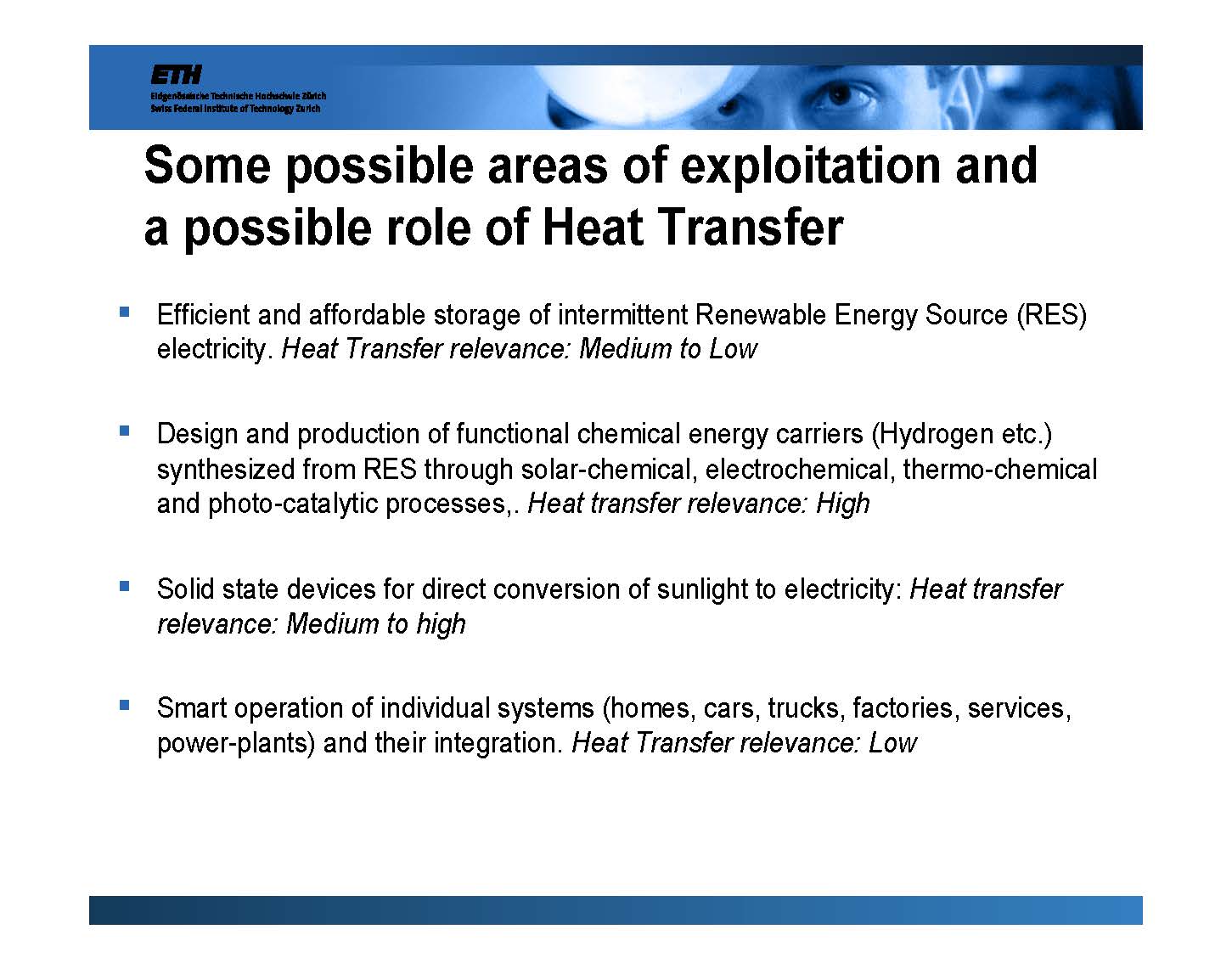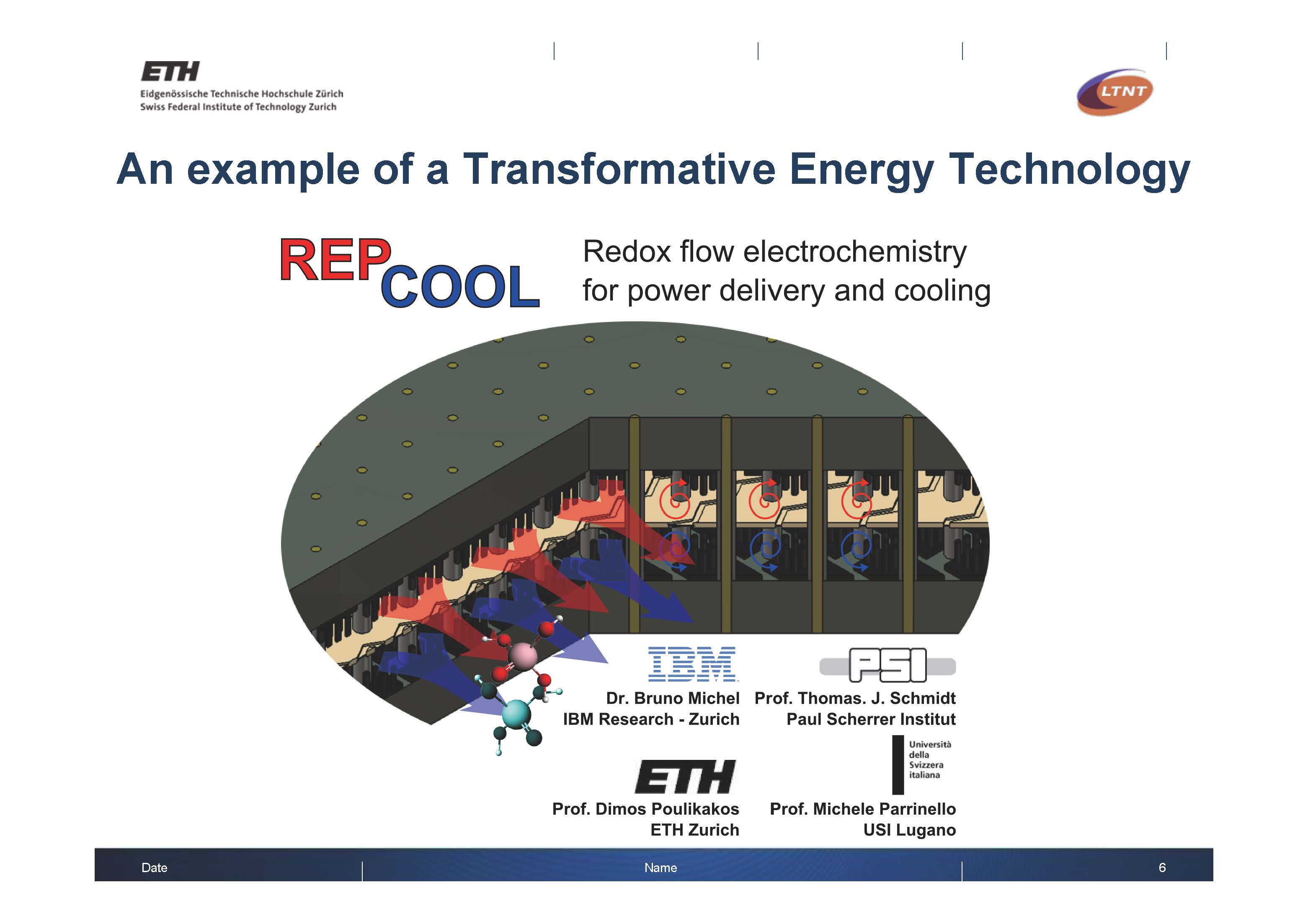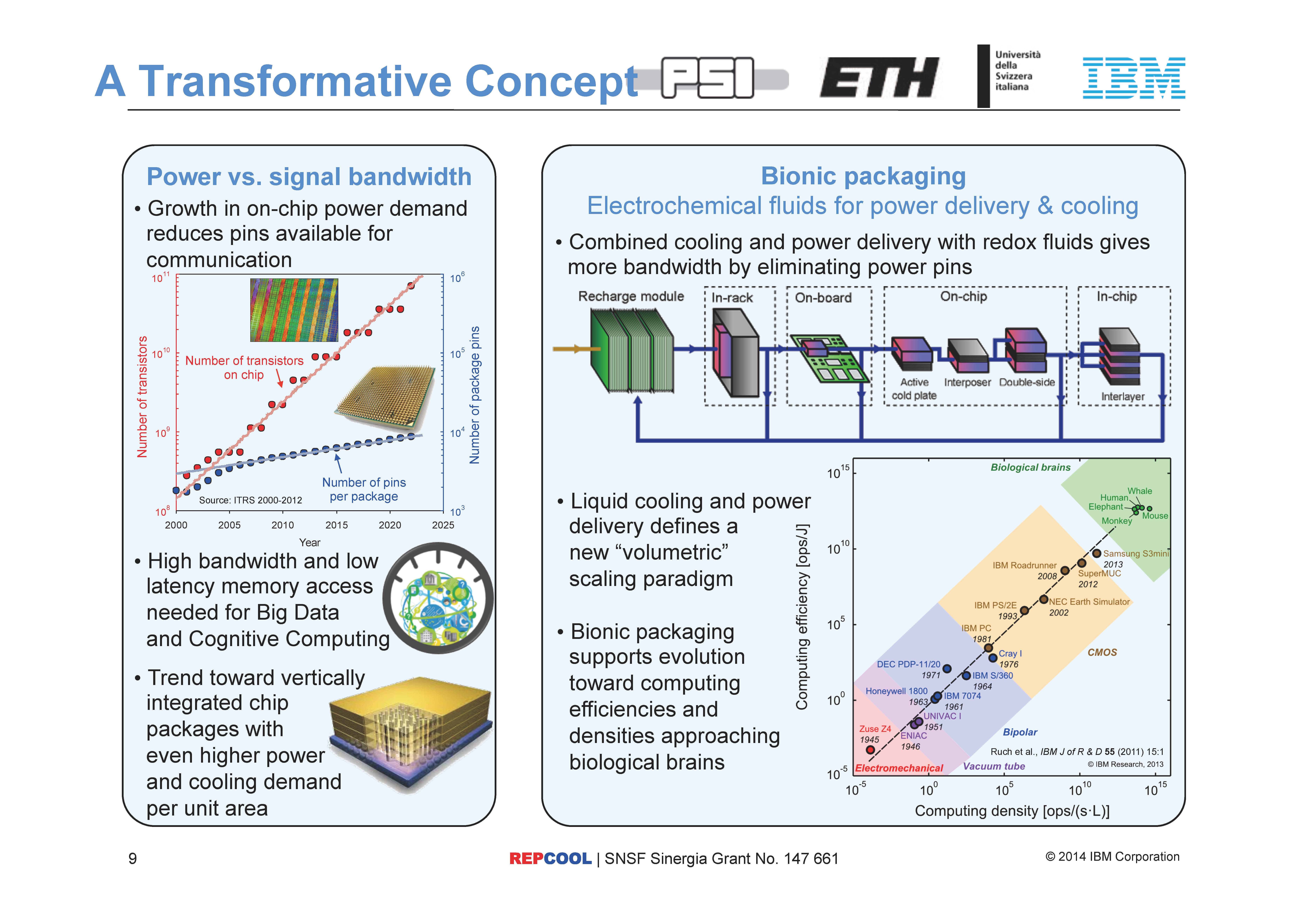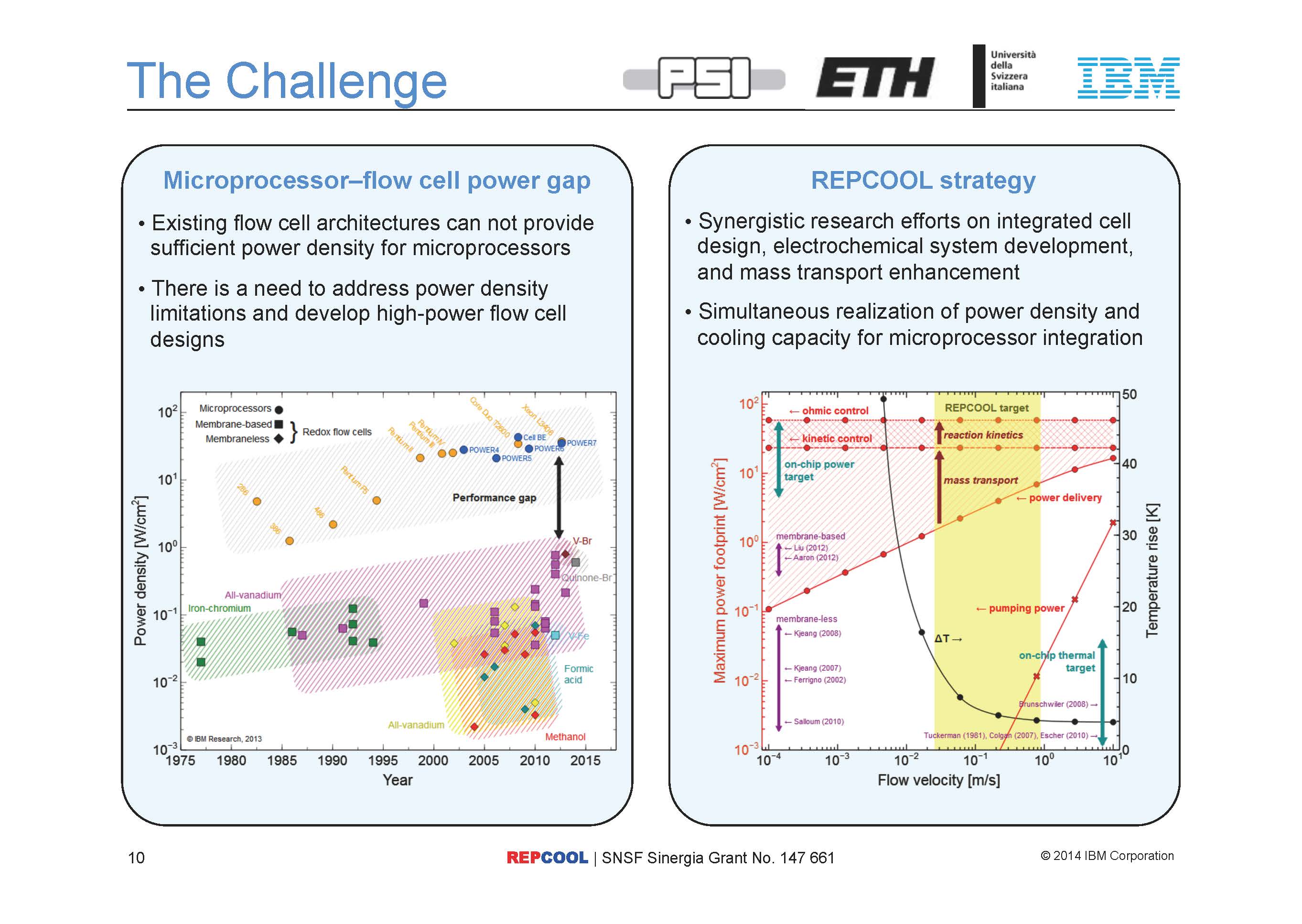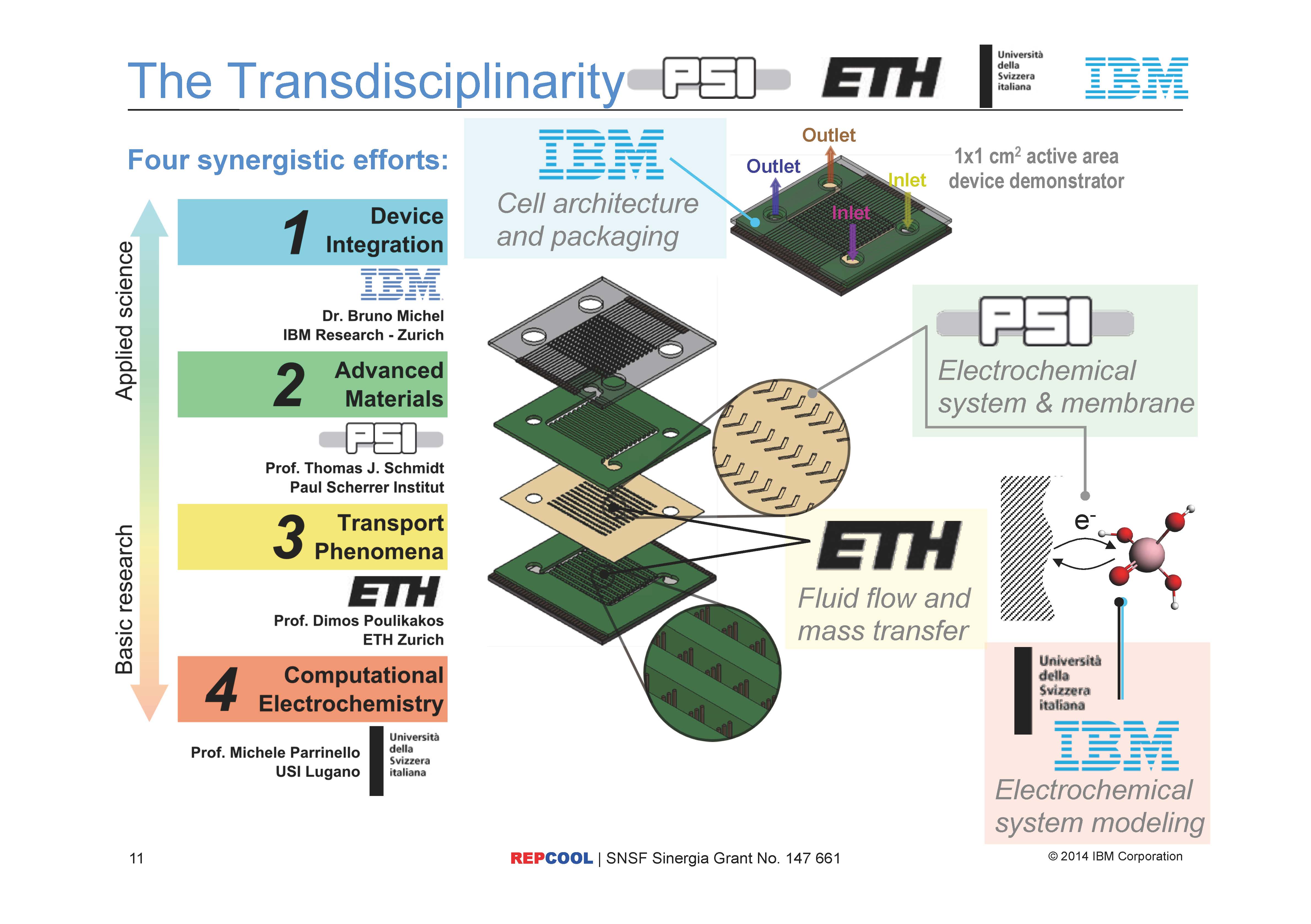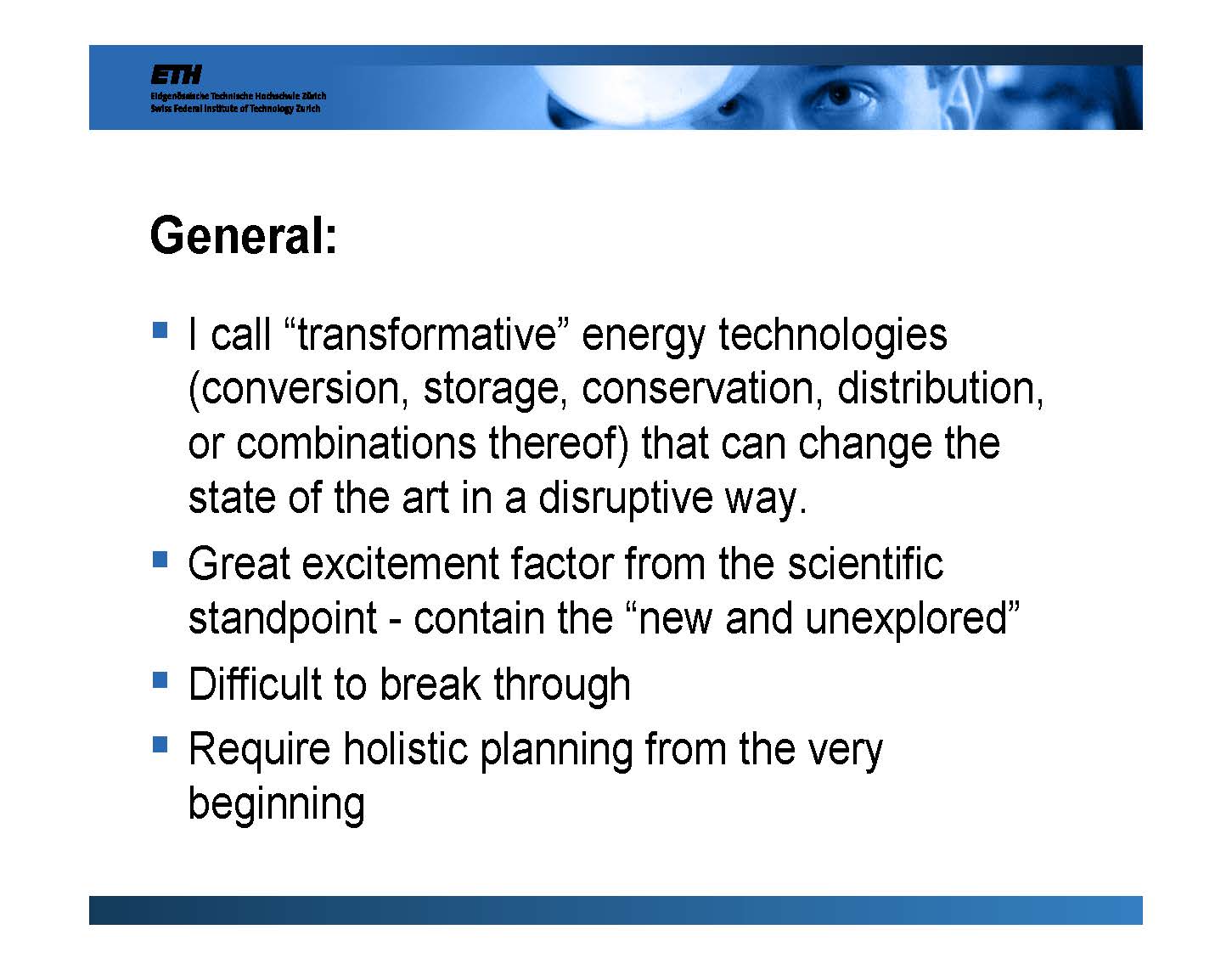
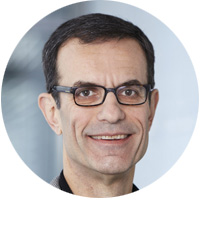
First of all what is that? I call transformative energy technologies and I include in the definition conversion, storage, conservation, distribution, and so on and so forth. Technologies that allow us to do things differently, not business as usual, and can change the given state-of-the-art in a disruptive way. Those technologies from the viewpoint of the researcher bring with them a great excitement factor. There is new physics, although I don't like using this word very much but creative people would like to explore the new and unexplored rather than something that has really been explored or want to quantify it better. That's the good thing. At the same time people forget that technologies would by definition be very difficult to breakthrough and use, maybe because their efforts will not be successful, but even if they are successful, they're going to have to replace an existing establishment and that is not always easy. Therefore, if one sets out with big programs to define transformative energy technologies, one should have a holistic planning from the beginning, not only doing the research, but looking further into the realities within which this technology would have to be implemented in the event that this technology were to be developed successfully.
